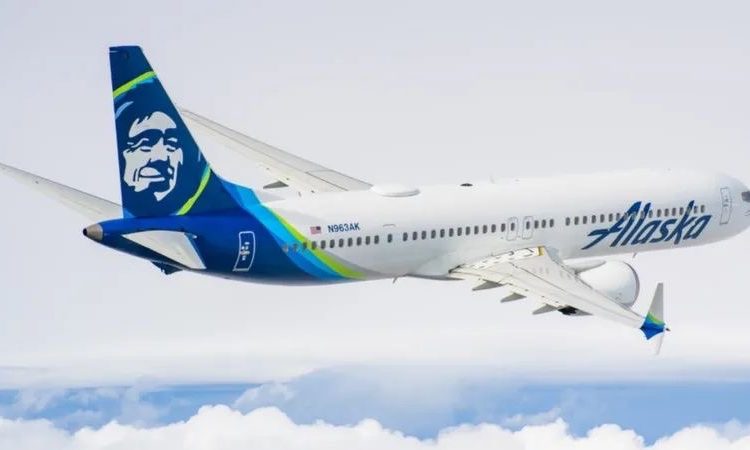
“It’s as if I’m watching a troubled child” is how Captain Dennis Tajer describes flying a Boeing 737 Max.
The head of the Allied Pilots Association, the pilots union for American Airlines, insists he would never board an aircraft if it were not safe.
But he says he can no longer take the quality of the plane he’s flying for granted.
“I’m at an alert status that I’ve never had to be in on a Boeing airplane,” he says.
“Because I don’t trust that they’ve followed the processes that have previously kept me safe on Boeing airplanes for over three decades.”
Executives at the aerospace giant’s shiny new headquarters in Arlington, Virginia could be forgiven for feeling like they are under siege.
Every day seems to bring more bad headlines for the company, which is coming under pressure from regulators and airlines, and has seen its reputation badly damaged.
The trouble began in January, when a disused emergency exit door blew off a brand new Boeing 737 Max shortly after take-off from Portland International Airport.
An initial report from the US National Transportation Safety Board concluded that four bolts meant to attach the door securely to the aircraft had not been fitted.
Boeing is reportedly facing a criminal investigation into the incident itself, as well as legal action from passengers aboard the plane.
But although no-one was seriously hurt, the affair had much wider repercussions. It cast a harsh spotlight on the aerospace giant’s corporate culture and attitude to safety.
Five years ago Boeing faced one of the biggest scandals in its history, after two brand new 737 Max planes were lost in almost identical accidents that cost 346 lives.
The cause was flawed flight control software, details of which it was accused of deliberately concealing from regulators.
The company agreed to pay $2.5bn (£1.8bn) to settle fraud charges, and admitted deception, though in later court hearings it formally pleaded not guilty. It subsequently faced widespread accusations that it had put profits ahead of passengers’ lives.
It reaffirmed its commitment to safety, and in early 2020 its newly appointed chief executive Dave Calhoun promised it could “do better. Much better.”
Yet the scrutiny that followed the incident in January this year has called that commitment into question.
Addressing those concerns, Mr Calhoun said: “We will go slow, we will not rush the system and we will take our time to do it right.”
Earlier this month the US regulator, the Federal Aviation Administration, said that a six-week audit of the 737 Max production process at Boeing and its supplier Spirit Aerosystems had found “multiple instances where the companies failed to comply with manufacturing quality control requirements”.
The findings came shortly after another report into Boeing’s safety culture by an expert panel found a “disconnect” between senior management and regular staff, as well as signs that staff were hesitant about reporting problems for fear of retaliation.
Adam Dickson, a former senior manager at Boeing who once worked on the 737 Max programme, agrees there is a gulf between executives and workers on the factory floor.
“The culture at Boeing has been toxic to trust for over a decade now,” he says.
“You can add safety steps, you can add procedures. But the fundamental issue of distrust makes those changes almost ineffective”, he claims.
Meanwhile, further evidence of how production problems could endanger safety emerged this week.
The FAA warned that improperly installed wiring bundles on 737 Max planes could become damaged, leading to controls on the wings deploying unexpectedly, and making the aircraft start to roll.
If not addressed, it said, this “could result in loss of control of the airplane”. Hundreds of planes already in service will have to be checked as a result.
Boeing said based on the FAA audit it was continuing “to implement immediate changes and develop a comprehensive action plan to strengthen safety and quality, and build the confidence of our customers and their passengers.”
BBC







